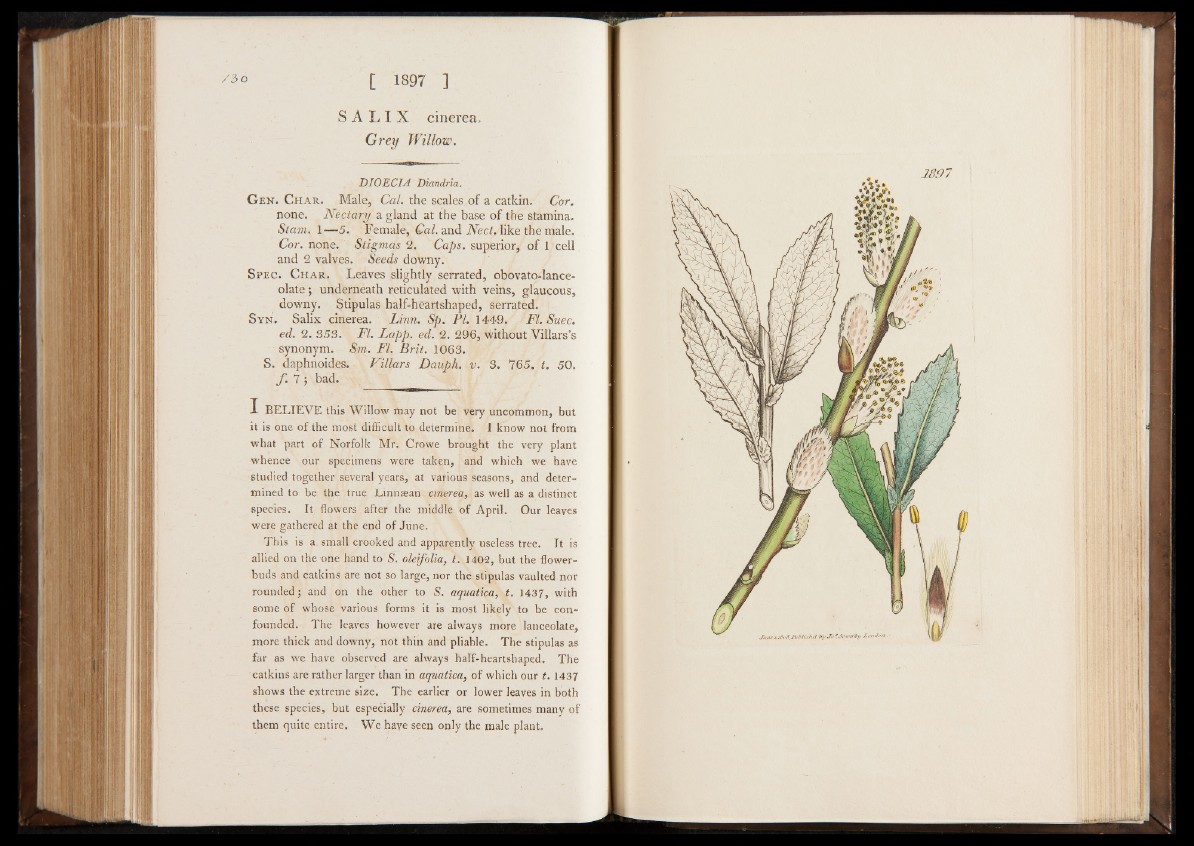
/s o [ 1897 ]
S A L I X cinerea.
Grey Willow.
DIOECIA Diandria.
G e n . C h a r . Male, Cal. the scales of a catkin. Cor.
none. Ne ctary a gland at the base of the stamina.
Stam. 1— 5. Female, Gal. and Nect. like the male.
Cor. none. Stigmas 2. Caps, superior, of 1 cell
and 2 valves. Seeds downy.
S p e c . C h a r . Leaves slightly serrated, obovato-lance-
olate; underneath reticulated with veins, glaucous,
downy. Stipulas half-heartshaped, serrated.
Syn. Salix cinerea. L inn. Sp. PI. 1449. FI. Suec.
ed. 2 . 353. FI. L app. ed. 2 . 296, without Villars’s
synonym. Srn. FI. B r it. 1063.
S. daphnoides. Pillars Danph. v . 3. 765. t. 50.
ƒ• 7 ; had. •
I BELIEVE this Willow may not be very uncommon, but
it is one of the most difficult to determine. I know not from
what part of Norfolk Mr. Crowe brought the very plant
whence pur specimens were taken, and which we have
studied together several years, at various seasons, and determined
to be the true Linnsean cinerea, as well as a distinct
species. It flowers after the middle of April. Our leaves
were gathered at the end of June.
This is a small crooked and apparently useless tree. It is
allied on thenne hand to S. oleifolia, t. 1402, but the flower-
buds and catkins are not so large, nor the stipulas vaulted nor
rounded; and on the other to S. aquatica, t. 1437, with
some of whose various forms it is most likely to be confounded.,
The leaves however are always more lanceolate,
more thick and downy, not thin and pliable. The stipulas as
far as we have observed are always half-heartshaped. The
catkins are rather larger than in aquatica, of which our 1 .1437
shows the extreme size. The earlier or lower leaves in both
these species, but especially cinerea, are sometimes many of
them quite entire. We haye seen only the male plant.